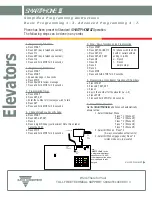
1-7
Cisco Unified IP Phone Administration Guide for Cisco Unified Communications Manager 8.5
OL-23092-01
Chapter 1 An Overview of the Cisco Unified IP Phone
What Networking Protocols are Used?
IEEE 802.1X
The IEEE 802.1X standard defines a
client-server-based access control and
authentication protocol that restricts
unauthorized clients from connecting to a
LAN through publicly accessible ports.
Until the client is authenticated, 802.1X
access control allows only Extensible
Authentication Protocol over LAN (EAPOL)
traffic through the port to which the client is
connected. After authentication is successful,
normal traffic can pass through the port.
The Cisco Unified IP Phone implements the
IEEE 802.1X standard by providing support
for the following authentication methods:
EAP-FAST, EAP-TLS, and EAP-MD5.
When 802.1X authentication is enabled on the
phone, you should disable the PC port and
voice VLAN. Refer to
Supporting 802.1X
Authentication on Cisco Unified IP Phones,
page 1-19
for additional information.
Internet Protocol (IP)
IP is a messaging protocol that addresses and
sends packets across the network.
To communicate using IP, network devices
must have an assigned IP address, subnet, and
gateway.
IP addresses, subnets, and gateways
identifications are automatically assigned if
you are using the Cisco Unified IP Phone
with Dynamic Host Configuration Protocol
(DHCP). If you are not using DHCP, you must
manually assign these properties to each
phone locally.
The Cisco Unified IP Phone supports
concurrent IPv4 and IPv6 addresses.
Configure the IP addressing mode (IPv4 only,
IPv6 only, and both IPv4 and IPv6) in Cisco
Unified Communications Manager
Administration. For more information, refer
to
Internet Protocol Version 6 (IPv6)
in the
Cisco Unified Communications Manager
Features and Services Guide
.
Link Layer Discovery
Protocol (LLDP)
LLDP is a standardized network discovery
protocol (similar to CDP) that is supported on
some Cisco and third-party devices.
The Cisco Unified IP Phone supports LLDP
on the PC port.
Table 1-2
Supported Networking Protocols on the Cisco Unified IP Phone (continued)
Networking Protocol
Purpose
Usage Notes
















































